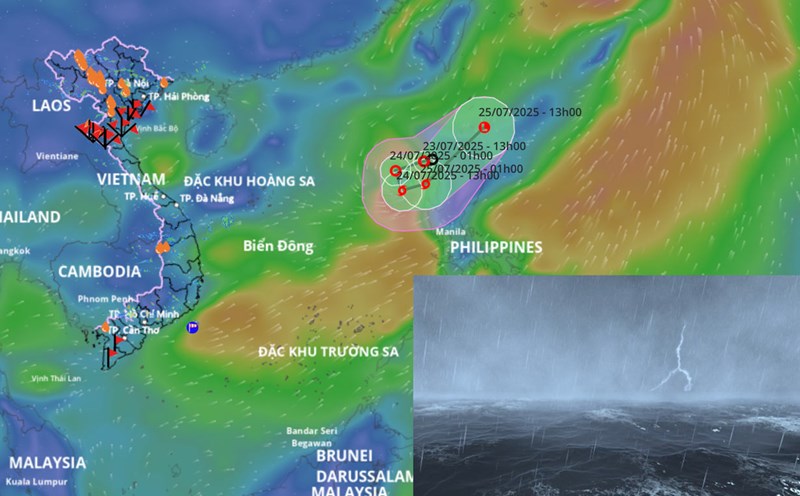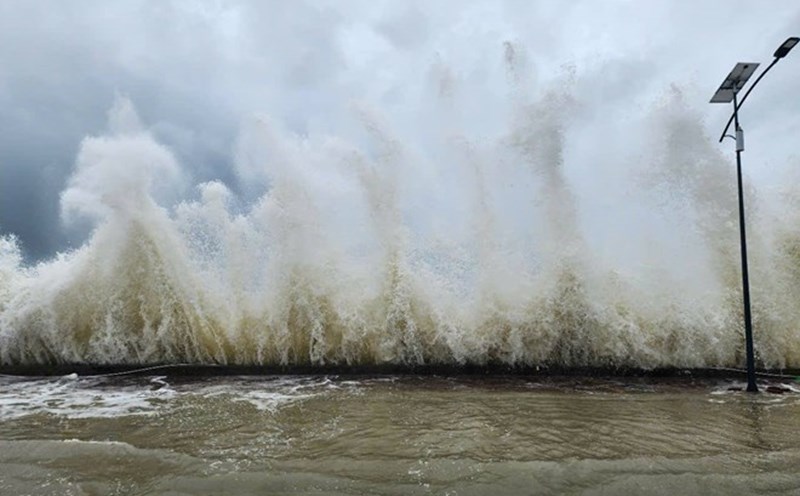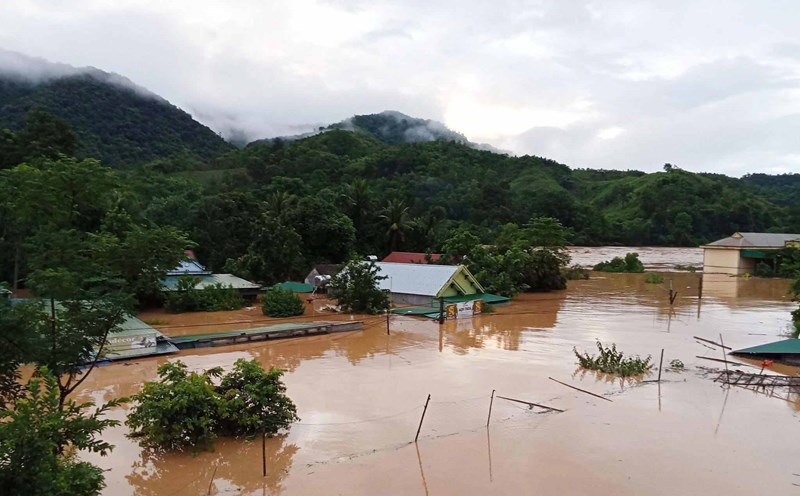Due to the impact of storm No. 3 Wipha, many areas in Nghe An experienced heavy rain. On the evening of July 22, due to prolonged heavy rain, the Nam Mo River water rose in combination with flood discharge from hydropower plants, many areas in Muong Xen commune (old Ky Son district) and along National Highway 7 were severely flooded.
According to urgent notice No. 604/TB-UBND dated July 22 of Nghe An province, the water flow to the upstream of Ban Ve hydroelectric reservoir reached 9,543 m3/s, nearly reaching the flood peak of 10,500 m3/s, equivalent to "5,000-year frequency" ( probability ~ 0.02%).
The "5,000-year-olds only have one" flood information has many wondering whether a similar flood will occur in 5,000 years and how severe it will be.
According to Dr. Luong Huu Dung - Director of the Center for Hydrological and Hydrological Research, Institute of Meteorology, Hydrology and Climate Change (Ministry of Agriculture and Environment), the information "one time in 5,000 years" must be understood correctly as a large-scale flood corresponding to a flood with a repeat cycle of 5,000 years, not a one time in 5,000 years, and this is only a possibility, not related to the time of occurrence.
Because floods are highly random, they can occur at any time. With a flood with a repeat cycle of 5,000 years corresponding to a probability of 0.02%, the possibility of a flood greater than or equal to this flood (specifically Ban Ve Lake is 12,800 m3/s) is very rare.
To put it more specifically, if a flood has a 5,000-year repeat cycle, that means the probability of it happening is 1/5,000, or 0.02%. This is a probability value (possible occurrence), not a time-related value.
Dr. Luong Huu Dung further analyzed that in hydrology, flood frequency (code P) is understood as the probability of exceeding. This means that the probability of a flood has a larger peak flow or the same flow as this probability. We often use the same concept of the T flood cycle (or repetition cycle) to refer to the average annual event between two floods of the same size. The relationship between frequency and cycles is: P = 1/T
For example:
- If T = 50 years → P = 1/50 = 2%
- If T = 5,000 years → P = 1/5,000 = 0.02%
According to Dr. Luong Huu Dung, there is a possibility that two consecutive years of flooding will have the same intensity of 5,000 years because this is the meaning of statistical probability, not a hard cycle.
"A flood with a probability of 0.02% does not mean having to wait exactly 5,000 years for a repeat. In theory, it could still happen next year, but the probability is extremely rare.
We should understand that saying 500 years is the way that experts in the field of deflation base statistics on a series of rain and flood data observed over many years. It is like saying historical examples, but here there is a clear calculation of probability - Dr. Luong Huu Dung analyzed.
Dr. Luong Huu Dung also said that people and the media should not misunderstand that "there will be a match in 5,000 years before the next match". It should be noted that for floods with the smaller frequency, the greater the rarity and extreme of the phenomenon, but that does not mean it cannot happen consecutively.











